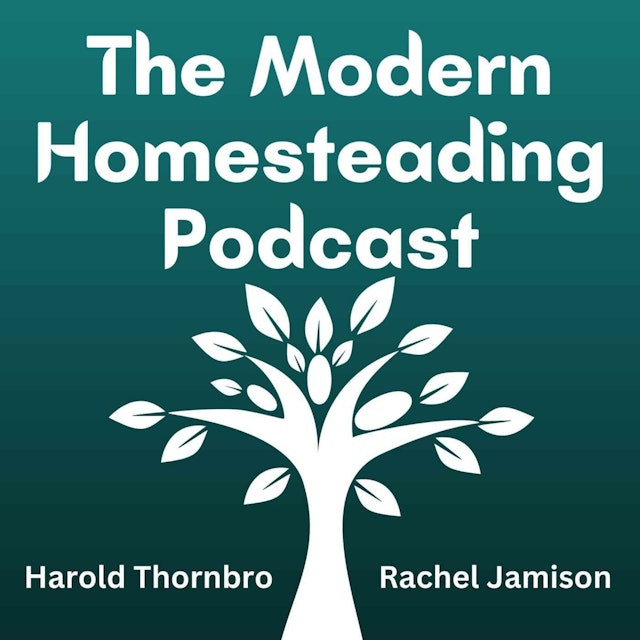The Modern Homesteading Podcast, Episode 125 – September 3, 2019 - Increasing Soil Fertility Through Permaculture Practices.
In this episode I discuss a few ways to help soil fertility in ways normally exercised in permaculture practices. These are ways that are simulated in nature to create balanced, rich and living soil.
Using Plants To Increase Soil Fertility
Polycultures and Guilds
Nitrogen fixing plants
Fast decaying root systems
Using Chop and Drop To Increase Soil Fertility
Puts nutrients on topsoil
Creates an environment for worms and beneficial insects
Creates an environment for a thriving microbiology
Using Livestock To Increase Soil Fertility
Rotational grazing
Using Swales and Ponds To Collect Nutrients
Using Hugelkultur To Create A Nutrient Dense Area
Increases microbiology through organic material decay and moisture retention.
Using Biochar
By making biochar from brush and other hard to compost organic material, you can improve soil — it enhances nutrient availability and also enables soil to retain nutrients longer.
What’s biochar? Basically, it’s organic matter that is burned slowly, with a restricted flow of oxygen, and then the fire is stopped when the material reaches the charcoal stage. Unlike tiny tidbits of ash, coarse lumps of charcoal are full of crevices and holes, which help them serve as life rafts to soil microorganisms. The carbon compounds in charcoal form loose chemical bonds with soluble plant nutrients so they are not as readily washed away by rain and irrigation. Biochar alone added to poor soil has little benefit to plants, but when used in combination with compost and organic fertilizers, it can dramatically improve plant growth while helping retain nutrients in the soil.
Using Leaf Mold
Leaf mold is the result of letting leaves sit and decompose over time. It is dark brown to black, has a pleasant earthy aroma and a crumbly texture, much like compost. In fact, leaf mold is just that: composted leaves. Instead of adding a bunch of organic matter to a pile, you just use leaves.
Leaf mold is essentially a soil conditioner. It increases the water retention of soils. According to some university studies, the addition of leaf mold increased water retention in soils by over 50%. Leaf mold also improves soil structure and provides a fantastic habitat for soil life, including earthworms and beneficial bacteria.
Using Fungus
For feeding fungi, the ideal wood chips should be obtained from freshly cut smaller branches with the leaves still on them. That’s where the most nutrients reside and the good fungi love that.
Beneficial fungi are certain species of fungi that protect our plants from disease by:
Out-competing disease organisms
Creating a healthy soil biology
Offering direct protection to our plants by producing anti-pathogens
Providing nutrients and water directly to the plants for better plant health
Compost Tea
Comfrey
Manure
Vermicompost
Worm Castings
The podcast The Modern Homesteading Podcast is embedded on this page from an open RSS feed. All files, descriptions, artwork and other metadata from the RSS-feed is the property of the podcast owner and not affiliated with or validated by Podplay.
